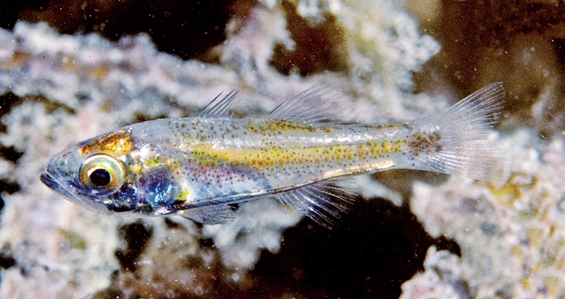General Description
Body slender, compressed, with two separate short-based dorsal fins; head bluntly rounded, mouth very large. Bronzy to silvery green with a silver tube-like light organ visible along the lower surface. To 5 cm.
Biology
Although common, this species is mostly active at night and not often seen during the day. Males incubate the developing eggs in their mouths.
Habitat
Rocky reefs in bays, estuaries and along the coast, hides in seagrass and kelp beds during the day, in depths of 1-30 m.
Reefs
Seagrass meadows
Distribution guide
Southern Australia.
Species Group
Depth
Water Column
Max Size
5 cm
Commercial Species
No
Global Dispersal
Native to Australia
Conservation Status
- DSE Advisory List : Not listed
- EPBC Act 1999 : Not listed
- IUCN Red List : Not listed





